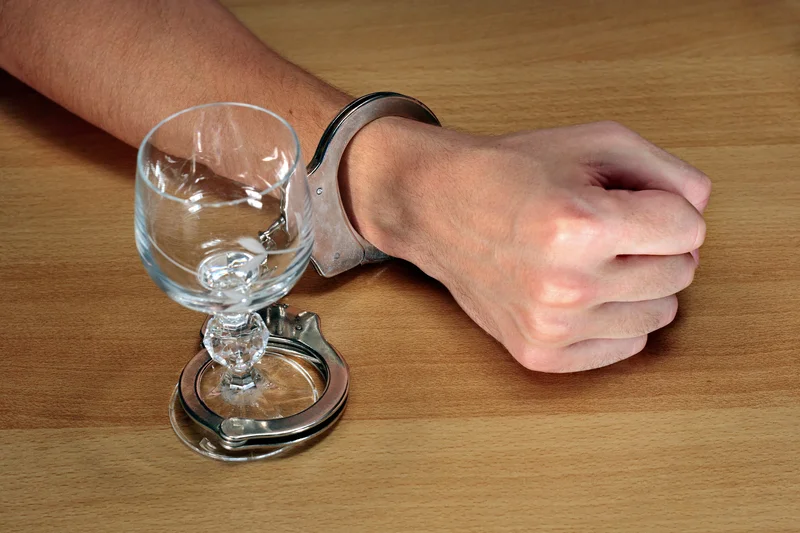
The initial euphoric effects of alcohol are a result of dopamine being released from the reward center in the brain. Part of the reason why people with an AUD continue to drink, regardless of the personal and social consequences, is the way it affects the brain. Alcohol addiction — the obsession and physical craving to consume alcohol — can partly be explained by the way that alcohol affects dopamine in the brain. As mentioned does alcohol cause dopamine release previously, in addition the affecting the dopamine system directly, alcohol interacts with the mesolimbic dopamine system indirectly via several other neurotransmitters. There is a wide range of such compounds, and here, we will only mention a few, specifically targeting glycine receptors and nAChRs, with a clear interaction with dopamine transmission in the mesolimbic dopamine system 64.

Effects of Serotonin Uptake Inhibitors

These observations indicate that alcohol stimulates the activity of endogenous opioid peptides, leading indirectly to the activation of dopaminergic neurons. Opioid peptide antagonists would interfere with this process, thereby reducing dopamine release. Dopamine’s effects on neuronal function depend on the specific dopamine-receptor subtype that is activated on the postsynaptic cell. For example, different subpopulations of neurons in the striatum carry different dopamine receptors on their surfaces (Le Moine et al. 1990, 1991; Gerfen 1992). Dopamine binding to D1 receptors enhances the excitatory effects that result from glutamate’s interaction with a specific glutamate receptor subtype (i.e., the NMDA receptor4). Conversely, activation of D2 receptors inhibits the effects induced by glutamate’s binding to another glutamate-receptor subtype (i.e., the AMPA receptor5) (Cepeda et al. 1993).
- Let’s explore how dopamine functions, how alcohol affects it and what treatment options can help manage these responses.
- An early double‐blinded study 172 reported that bromocriptine reduced alcohol craving in alcohol‐dependent patients with a specific genotype of the dopamine D2 receptor gene (i.e. the A1/A1 and A1/A2 genotypes).
- Understanding these various influences on our brain’s reward system can help individuals make informed decisions about substance use and overall health.
- Dopamine that has been released from a nerve terminal into the synaptic cleft can travel out of the synapse into the fluid surrounding the neurons and activate these extrasynaptic receptors.
Disorders

The α4β2 and α7 subtypes of nAChRs are particularly relevant, as they are expressed in reward-related brain regions such as the VTA. Activation of nAChRs in the VTA stimulates dopamine release, reinforcing alcohol’s rewarding effects. This mechanism is similar to nicotine’s action, which may explain the high co-use of alcohol and tobacco products. Studies show that pharmacological blockade of nAChRs reduces alcohol consumption in animal models, suggesting their role in dependence. Additionally, genetic variations in nAChR subunit genes, such as CHRNA5, have been linked to differences in alcohol sensitivity and risk for alcohol use disorder. In the amygdala, enhanced inhibition reduces anxiety, contributing to alcohol’s calming effects.
The Brain’s Struggle to Recover Dopamine Balance After Addiction

Dopamine receptors, primarily the D1-like and D2-like families, mediate the downstream effects of this surge. D1 receptors facilitate reward learning by enhancing synaptic plasticity in the nucleus accumbens, reinforcing associations between alcohol and pleasure. D2 receptors influence both reward sensitivity and aversion, with lower baseline availability linked to higher addiction susceptibility. All psychoactive drugs can activate the mesolimbic DA system, but the DA system is not the only system involved in the positive reinforcement network in the NAc. Previous research about the neurobiochemisty of alcohol dependence has focused on the DA system, but many of the findings have been contradictory. Further research aimed at clarifying the interaction between the DA system, the glutamatergic system and other neurotransmitter systems is needed before it will be possible to improve the effectiveness of interventions for preventing and treating alcohol dependence.
The Relationship Between Alcohol Use Disorder and Mental Health Disorders
- For example, in studies performed in rats, alcohol injected into the blood in amounts as low as 2 to 4 milligrams per kilogram of body weight increased dopamine release in the NAc shell and maintained chronic alcohol self-administration (Lyness and Smith 1992).
- Together with OSU6162’s favourable side effect profile 198, 197, 199, these results render support for a larger placebo‐controlled efficacy trial in alcohol‐dependent patients to evaluate OSU6162’s effect on drinking outcomes.
- On the other hand, newer dopamine agents, without complete antagonism or agonism, especially the dopamine stabilizers show promise and deserve further investigation in alcohol‐dependent patients.
This dual effect contributes to the initial stimulation and sociability followed by sedation. Chronic alcohol exposure leads to neuroadaptive changes in GABA_A receptor function, contributing to tolerance and dependence. Prolonged use results in receptor downregulation and altered subunit composition, reducing sensitivity to endogenous GABA. This adaptation plays a key role in alcohol withdrawal syndrome, where diminished GABAergic inhibition leads to hyperexcitability, manifesting as anxiety, tremors, and, in severe cases, seizures. Benzodiazepines are often used in withdrawal management due to their ability to restore GABAergic tone. Dopamine dysregulation caused by marijuana addiction chronic alcohol use is directly linked to increased rates of anxiety and depression.
- «We have known for a long time that alcoholism runs in families, which implies a genetic risk,» said Dr. Raymond F. Anton, Distinguished Professor and director of the Center for Drug and Alcohol Programs at the Medical University of South Carolina.
- The positive reinforcing action of alcohol comes from the activation of the dopaminergic reward pathway in the limbic system.
- There is an underlying disruption in the reward systems in individuals with alcohol dependence.
- 2 After you get past the temporary though sometimes severe discomfort of alcohol withdrawal symptoms, you’ll notice increasing improvements in your physical and mental health.